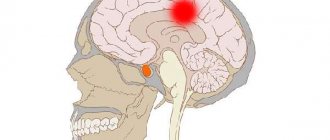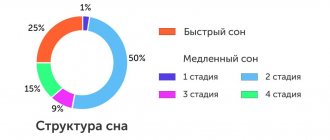It often happens that a client, having turned to a psychologist, has difficulty finding words to describe the situation in which he finds himself. This is even more difficult for children to do due to their limited experience of reflection. What to do? How can I help you?
Projective techniques come to the rescue: you can draw, you can dance, you can sculpt, you can silently depict, you can select famous quotes, and so on. At the present stage of development of practical psychology, fairy tale therapy has become an active and quite successful projective method.
Fairytale therapy is an active method of psychological influence , which allows for gentle diagnosis, prevention, correction, and deep therapy using amazing material, which is what a fairy tale provides.
Fairy tales for fairytale therapy are a tool that is suitable for absolutely any age category of clients with any physical and mental characteristics. Through painless abstraction and metaphor, a fairy tale allows you to look into the human soul, understand the essence of the problem and the circumstances of what is happening.
The client easily chooses an association with his situation, a hero who has already been in such a “picture”; even ready-made answers and solutions can simply be read in a fairy tale.
Fairytale therapy is treatment with metaphor . Currently a widely used psychological method. Doctors, psychologists, teachers find in it exactly the resource that allows them to achieve their goals with a specific client.
Foreign and domestic psychologists who were involved in the development of the method of fairy tale therapy:
- E. Fromm,
- E. Bern,
- E. Gardner,
- I. Vachkov,
- M. Osorina,
- E. Lisina,
- T. Zinkevich-Evstigneeva and others.
The main means of influence in fairy tale therapy is metaphor . The more accurately it is matched to the situation, the more effective the work is with both children and adults.
The genres for work are varied:
- fairy tales,
- parables,
- fables,
- legends,
- sagas,
- myths,
- jokes,
- epics,
- detectives,
- novels,
- fantasy and others.
Fairytale therapy as a method of psychological correction
Correction of behavior and emotions requires full cooperation of parents, child and psychologist. It is difficult for a child to describe sensations in words and formulate a problem due to little experience of interacting with society. He has in his arsenal a cry, hysterics, resistance, aggression, crying, jealousy, sadness, which frightens parents and makes them think about solving the problem. Fairy tale therapy is used as a method of working with a small child; in psychology, this method is distinguished by its gentleness, unobtrusiveness, and tact. The method is often combined with creativity - drawing or sculpting the characters of a story or fairy tale. For young children 3–4 years old, stories about animals are selected; children 5–6 years old like fairy tales about non-existent magical characters - fairies, elves.
Fairytale therapy, as a method of psychological correction, is of particular value because it allows the child to experience various emotions and openly experience them. The solution to a behavioral or other problem occurs internally. The specialist and parents observe behavior, at the right moment pushing the child to understand words and actions, helping to cope with stress.
Using the method of fairy tale therapy, the following negative processes can be eliminated:
- difficulty eating;
- bedwetting or problems with bowel movements;
- jealousy due to the appearance of a second child in the family;
- loss of a loved one or pet;
- hyperactivity, aggression, depression, obsessive states;
- phobias.
In some cases, specialists use a fairy tale to identify a child’s vulnerable spot and outline a plan for corrective work.
A fairy tale can carry out deep psychocorrection
Psychocorrection is a purposeful change in the perception of life or behavior of a client who needs psychological help. Fairytale therapy is a gentle effect on the psyche.
A psychocorrectional tale is a fairy tale that allows you to look at your problem from a different point of view and see solutions. Analysis of a psychocorrectional fairy tale allows you to choose the appropriate solution. They are often called psychotherapeutic stories that clearly and clearly show the most ineffective way of behavior.
The method of fairy tale therapy in correctional activities is effective only in this case - the client is interested and emotionally involved in the work on the fairy tale.
A variety of fairy tales are suitable for the correctional activities of a specialist, corresponding to the age and goals of the client: Russian folk tales, parables, fables, fairy tales of the peoples of the world, author's tales. The best fairy tales are written independently; there, without any doubt, the client will work out everything that is needed at the moment. A psychologist, working towards changing behavioral patterns, writes the necessary fairy tale himself.
Fairy tales for psychocorrectional work:
- Household (“Kolobok”, “Ryaba Chicken”, “Porridge from an Axe” and others);
- Magic (“Morozko”, “Puss in Boots” and others);
- Instructive (“The Fox and the Crane”, “The Cockerel and the Bean Seed” and others);
- Scary (“Bluebeard” and others);
- Heroic (“Dobrynya and the Serpent”, “Sivka-Burka” and others).
Simply telling a fairy tale to a child without further analysis or explanation is already like a full-fledged consultation for an adult. Gently on a subconscious level, a grandiose work is underway, a change in the internal plan of action is taking place. There is a “replacement” of a style that has become ineffective with a new productive one. The events that are happening are explained to the child using a metaphor.
What problems can be corrected with a fairy tale:
- fears of the dark, doctors, dogs and others;
- optimization of social skills and interaction experience;
- hyperactivity;
- speech disorders;
- emotional instability, self-regulation;
- aggressiveness;
- psychosocial gender identity;
- psychosomatic manifestations: enuresis, digestive problems;
- difficulties in family relationships;
- experiencing divorce, loss of loved ones or beloved animals;
- post-traumatic manifestations
- internal conflicts and others.
Algorithm for a psychocorrectional tale:
- Once upon a time... - getting to know the characters, gender and age as the client, matching character traits is useful, the main character can be a favorite character or toy.
- And suddenly one day... - a collision with a problem, a conflict, the description should contain facts, parallels that coincide with the client’s real picture.
- Because of this... - the search for solutions, acquaintance with several paths and roads is underway, the appearance of assistants occurs at this stage of history.
- Climax - the heroes cope with the problem, overcome all difficulties.
- The denouement is a positive outcome of the story, the hero made a choice, admitted mistakes, and received a reward.
- The moral of the story is learning a lesson from the chosen actions, changing the course of the child’s real life.
The essence of the method
In some cases, forceful parenting methods are ineffective and cause even greater trauma. Therefore, it is necessary to influence the child’s consciousness and subconscious indirectly, showing him examples of constructive behavior that allows him to peacefully solve the problem of interaction with parents and society.
Fairytale therapy is one of the methods that is allowed to work with very young children. It is necessary to understand that a child understands a story told by an adult after some time, so immediate results are rare. If he became interested in the story and tried on the behavior of the characters in the story, this can be considered success.
The advantage of the method is that it has no age restrictions - it is suitable for mature individuals, children, and teenagers. True, in this case, different literary genres are selected - novels, detective stories, fairy tales, epics, parables.
In the process of work, the child unconsciously chooses a character in the story with whom he has much in common, tries to understand the behavior, and explain it in his own words. With the help of fairy tales, a psychologist conducts initial diagnosis, correction, and prevention of thinking and behavior.
The concept of fairy tale therapy and its functions
Fairytale therapy is a technique that helps develop a preschooler and gently influence his emotional state. She especially helps patients with psychological and behavioral difficulties. Therapy allows you to deal with fears, indecisiveness, aggressive behavior and other qualities that greatly interfere with the child. Using children's stories helps improve mental abilities, thinking, imagination, and also allows you to better understand how the world works.
Goals of correction using fairy tales:
- Reducing emotional stress.
- A trusting atmosphere while reading a fairy tale.
- Restoring or establishing relationships between children and adults.
- Identification by a child of negative qualities in himself.
- Help in increasing self-esteem.
- Improving mental function, developing imagination.
- Increasing self-confidence, building faith in one's own strength.
- Learning to communicate with others.
- Treatment of psycho-emotional trauma, autism, hyperactivity syndrome and other pathologies.
The fairy tale shows an example of relationships between people. This often happens in the example of animals. The work helps to see the negative and positive sides of the characters, and reveals to the child possible undesirable consequences that arose due to incorrect behavior. In children's stories, good always wins, which shows a preschooler or schoolchild an example that it is better to be good rather than bad. This all develops moral qualities, teaches them to be noble, kind, honest, fair and so on.
The work helps the child learn to fantasize. He presents the plot in a variety of versions and roles. If a small patient has low self-esteem, then a fairy tale about a king or queen, princess or prince is more suitable. A preschooler will increase his self-esteem while reading.
If a preschooler is shy, fairy tales about the cowardly hare are more suitable for him. While reading the story at an appointment with a psychologist, the patient will reveal his fears. If the session is given to a group of children, participants can discover and cope with their fears.
Today, parents read fewer fairy tales to their children, which greatly reduces the development of imagination. Children watch more cartoons and listen to audio stories. This affects the further perception of school material by ear. Therefore, it is very important to read more to your child in preschool age.
Children's works help not only educate children, but also treat mental trauma. Fairytale therapy also performs a preventive function in the occurrence of psychological pathologies. Fictional characters reveal a problem to the patient using an example of a plot, and then show a solution to it.
Fairytale therapy methods
To fully reveal personal qualities, various methods of working with literary text are used:
- Reading a story or fairy tale by a psychotherapist. This helps the child relax, listen silently, and get used to the psychologist’s voice and demeanor. In the first 10–15 minutes, contact is established.
- Discussion of the story. Once contact has taken place, it is easier for a child or teenager to get involved in work. At this moment, the gradual revelation of personality begins. The specialist observes the client, takes into account the tone of voice, movements of the hands, body, and facial expressions.
- A trusting relationship is a reason to give the child the opportunity to write his own story. Sometimes this moment needs to be postponed to the next session of work, to give time to think about the situation, to rebuild consciousness.
- If the client is shy or worried, the specialist gives him the opportunity to express his attitude towards the heroes of the fairy tale in creativity: draw characters with colored pencils, make a sculpture. This process reflects the person's mood at the moment. Sometimes both techniques are used in the work - at the beginning of the session and at the end. Usually, after a creative act, negative emotions change, so the next drawing will be lighter.
During long-term sessions, the psychologist and children create dolls, which are subsequently used to stage a theatrical performance in which situations are played out.
Recommended books
- Gnezdilov A. V. Author's fairy tale therapy.
- Zinkevich-Evstigneeva T. D. Workshop on fairy tale therapy.
- Kozlova E. G. Fairy tales and tips. Problems for a math club.
- Lomakina G. Fairy tale therapy.
- Prokhorov V., Rubanova S., Otradnova A. The healing power of fairy tales.
- Sakovich N. A. Practice of fairy tale therapy.
- Sokolov D. Fairy tales and fairy tale therapy.
- Stishenko I.V. Fairytale therapy for solving personal problems.
- Tkach R. M. Fairytale therapy for children's problems.
- Tkacheva T. Psychotherapeutic fairy tales for adults and children.
In the above books you can find examples of fairy tales and methodological recommendations on how best to use them in working with adults and children. Despite the fact that not all psychologists share the enthusiasm for the effectiveness of this trend, it is incredibly popular all over the world and over 20 years has helped tens of thousands of people find harmony in their souls and get rid of phobias.
Directions
Work is being carried out in several directions:
- Thinking develops. The most suitable age is 3–12 years. You can ask your child to analyze the actions of the heroes, taking what he says seriously, since his point of view is a reflection of the inner world. It is suggested that you finish the story yourself, explaining why the fairy tale should end this way.
- There is a transfer of experience from the older generation to the younger. The first moral experience comes, the child learns to distinguish between good and evil.
- Teaching life situations that the baby will have to face. The main thing is that he has an idea of how to get out of this situation.
- Solving psychological problems. Writing your own story allows the specialist to identify possible problems that will need to be addressed in the future.
In the process of work, contact is established and barriers are eliminated. The child unconsciously demonstrates the hidden motives of his own behavior, dissatisfaction with the situation and people. Negative emotions appear when a child composes fairy tales himself, even if the emotional trauma is hidden deep in the subconscious. The internal conflict comes to the surface and makes you think.
The main work occurs at the subconscious level, without causing protest in the child. The most interesting thing is that fairy tale therapy has a similar effect on adults.
Psychological schools
Despite the fact that fairy tale therapy as a separate direction in psychology took shape only in 1997, already before that the influence of this genre on personality development was considered in various psychological schools.
Carl Jung
Swiss psychiatrist, psychologist, teacher. School of Analytical Psychology. He proved that in his behavior and when making responsible decisions, a person often acts unconsciously (he cannot explain why he did what he did), but is guided by mythologies and archetypes from fairy tales.
As a child, the boy was constantly read the same fairy tale - about Rapunzel. And in the future, he chose women only with long hair. The child grew up reading scary fairy tales and subsequently began to get involved in extreme sports in order to experience the feeling of fear and a surge of adrenaline again and again.
Eric Bern
How to select fairy tales for the method
For children of kindergarten age, fairy tales are selected where the characters are animals. Younger preschoolers compare themselves with their pets and imitate them.
Children who underestimate themselves as individuals will listen with great interest to stories about magical transformations. It is important for them to know how to reincarnate correctly in order to accept themselves at the moment and know the next steps. They cannot formulate the problem because they are not aware of its existence. A fairy tale about the transformation of a frog into a prince will help to cope with the situation when a child ends up in a foster family. Instead of reading, you can watch cartoons based on literary works.
Fairy tales help you gain confidence that miracles can happen in life. This genre is suitable for children 6–7 years old.
Scary stories. Develop stress resistance and the desire to cope with the problem. Contrast and expressive reading are important here. If folk tales are used, the ending is usually changed to a more cheerful one so that children laugh heartily. In this way, confidence is established that everything terrible ends well. The horror genre is suitable for children over 7 years old.
Everyday stories. They stimulate thinking and ingenuity in order to emerge victorious from a situation. More suitable for teenagers.
Psychocorrectional tales. Their essence is that the child’s problem coincides with the character’s problem. There must be a choice of options for how the hero decides to act. The child unconsciously chooses his behavior model.
Meditative tales
These are relaxing stories that are usually read to children at bedtime. The plot should be calm and conflict-free. It is important to choose the right colors in the description so that the baby can imagine them and fall asleep peacefully. Green, blue, blue colors will help you relax, lower your heart rate, and expand your capillaries.
Meditative fairy tales are close in their effect to hypnosis, which puts a person into an alpha state, in which the most complex problems are solved, contradictions are eliminated, and a leap in mental development occurs. In a state of alpha and theta rhythms, the consciousness works, and the body is completely relaxed. In the future, the child will look for this magical state to relieve stress after a working day and resolve family conflicts.
The influence of psychotherapeutic fairy tales on children
Using this method, the psychologist influences the deep processes of thinking and emotional manifestations. The child develops vocabulary and learns to formulate his own point of view.
The use of different literary genres helps to eliminate children's fears, acquire basic communication skills, and a culture of behavior in society. Simultaneous work with the baby’s parents gives tips on how to properly communicate with him in the future. According to research results, psychological fairy tales for children helped to avoid problems during school adolescence.
Listening to animal stories teaches a child to care for pets, believing that they are the heroes of his story.
conclusions
Due to little experience, it is difficult for a child to clearly formulate his experiences and thoughts on this matter. And the symptoms, signs that indicate that there is a problem, are familiar to all adults - whims, tears, screaming.
“I DO NOT want to go to kindergarten!”, “I won’t eat porridge!”, “You don’t love me!”, “I won’t go to sleep!” and so on. You can apply pressure with the authority of an adult and force you to do all this, this is what young parents often do. After all, we tried, reproaches and reprimands with moral teaching practically do not work.
You can tell a useful short story. Briefly about the main thing that changes behavior and level of awareness. The child will be happy to try on a new role and try to imitate the hero.
Communicate with your children more, ask him a lot of questions: does he like the main character, did he do well at the beginning, what could have been done, what would you do in such a situation.
In a simple and easy way, by joyfully holding hands with a child, everyone can improve the quality of life and relationships.
The practice of fairy tale therapy in working with children
Fairytale therapy has certain rules and patterns that are observed during work. The plot must be appropriate for the age and skills of the children, contain contrasting images, and have several options for solving the problem. Sometimes author's fairy tales are used, specially selected to solve certain didactic problems.
The reader must have the skills of expressive text reproduction, a well-trained voice, facial expressions, and gestures. Only such a theatrical set can involve children in a discussion and provoke an emotional response. It is important to avoid the teacher’s strict tone - the psychologist is different in that he does not teach, while the children change for the better. Sometimes you have to correct the consequences of school “training” when a teenager loses faith in himself, his own strength, and adults. The task of a psychologist is to make it clear that people are different. Someone else's illiteracy is not a reason to devalue yourself.
Rules for constructing the structure of a fairy tale:
- The plot begins with children introducing the characters of the story.
- Next, you should voice the problem - general or individual, depending on whether the psychologist is working with a group or one child.
- Search for solutions to the problem by the heroes of the story.
- Overcoming difficulties is the main goal of a fairy tale. The hero receives recognition and reward.
- Discussion of findings.
Next, the lesson includes time for art therapy - drawing, sculpting. You can display an entire scene with multiple characters. At the end of the lesson, it is important to consolidate the acquired skills by discussing the conclusions.
If the child is sad, nervous, and cannot delve deeper into the process, it is better to postpone the lesson, giving the child the opportunity to draw calmly.
Benefits for children
Influencing the will of a person who is unsure of himself usually causes resistance. The fairy tale gives several options for solving a problem situation, so children choose for themselves what they like best and remember the algorithm of actions.
Literary works can show how to work in a team. This affects a person's leadership abilities in the future. Business trainers often use fictional stories when conducting seminars for sales representatives, managers, and agents. The foundations laid in childhood contribute to the development of a person’s leadership qualities.
The ability to develop, learn, and change is the main goal of fairy tale therapy as a correction method. Anger and whims are replaced by a constructive approach, the desire to emerge victorious while experiencing joy.
Psychology of the victim - fairy tale therapy for adults
There are many manuals and techniques that use fairy tale therapy to help people with victim behavior attitudes. Such fairy tale therapy for women is of particular interest. The famous author M. Odintsova called her book: “Psychology of the Victim. Fairytale therapy for adults." In her work, she explains the very concept of “victim” and describes how such a model of behavior suppresses personal potential, preventing development and growth. The goal of fairy tale therapy is to overcome defeatist psychology and reach a new – constructive level of life creativity.











